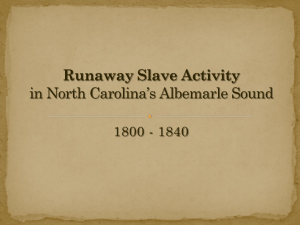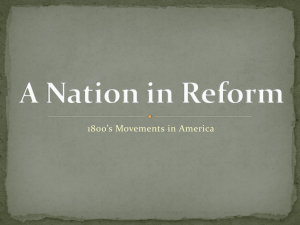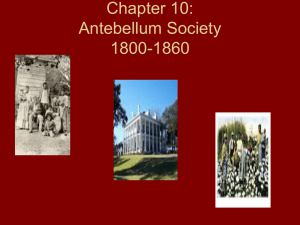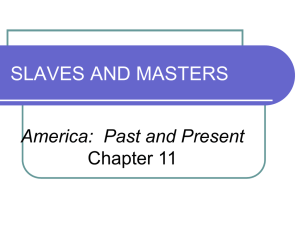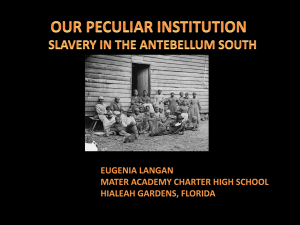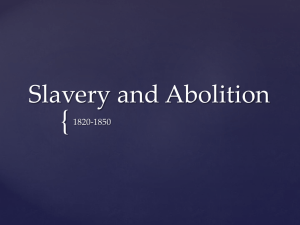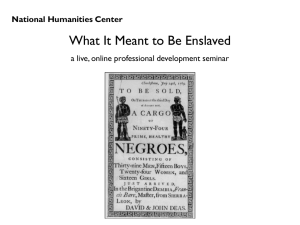8-4.1 Explain the importance of agriculture in
advertisement
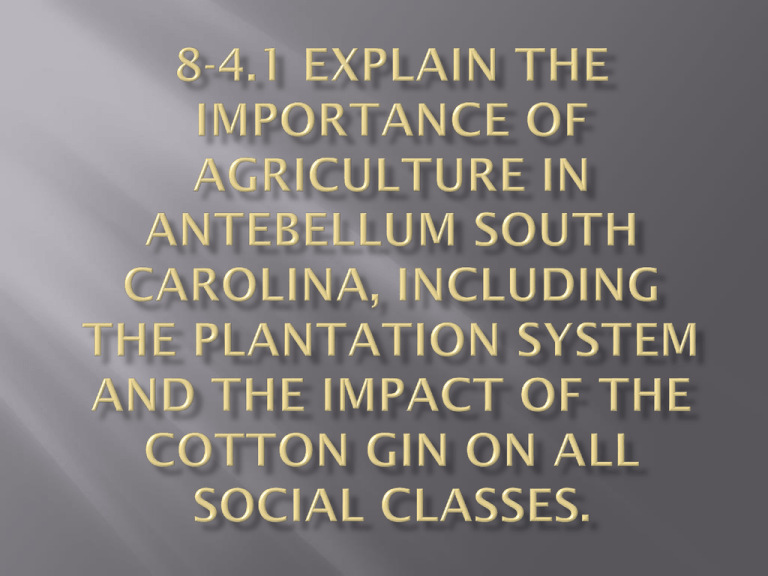
During colonial times agriculture was the basis of society in South Carolina. The Headright Method and the availability of slave labor contributed to the establishment of large plantations. By 1860, South Carolina had the highest percentage of slaveholders in the nation. South Carolinians lived on family or subsistence farms. Most did not own slaves. The majority of slave owners in South Carolina owned only one or two slaves and often worked beside their slaves in the fields. Few slave owners owned large plantations. However, the economic, social, and political systems in South Carolina were based on the institution of slavery. In 1793 Eli Whitney invented the cotton gin and South Carolina farmers had a new cash crop. As a result they planted more cotton to increase profits and became even more dependent on slave labor. Now cotton could be planted in the Upcountry and soon the upcountry farmers increased their ownership of slaves. The cotton gin had impacted the lives of slaves and the political rights of white South Carolinians. As a result, the elites of the Lowcountry were less fearful of loss of political power to the Upcountry. Since the Regulator Movement, the Upcountry had wanted equal representation in the legislature. In 1810, voting became equal. An amendment to the Constitution gave one vote where one lived to every “free white man of 21.” No longer did a voter have to own property. Nor could a person vote in as many districts as he owned land. South Carolina was the first state to give the vote to all white males over the age of twentyone. Although slave importation (international slave trade) was outlawed in 1808, the slave population continued to grow in antebellum SC because of cotton. 1. What caused sectionalism to increase between the North and South from 1800 to 1860? a. Soaring profits earned by slave traders. b. Federal laws supporting the abolition movement. c. elections of presidents strongly opposed to slavery. d. deciding whether slavery should exist in new states. 2. What effect did the invention of the cotton gin have on S.C. and the South? a. It allowed farmers to grow and harvest more cotton on the same amount of land. b. It created a labor surplus that permitted cotton farmers to plant different crops. c. It made transporting cotton to market faster and less expensive. d. It led to increased cotton production and labor shortage. With ready markets in the textile mills of the North and in England, planters sold cotton at good prices and both southern planters and northern mill owners acquired great wealth either directly or indirectly due to slave labor. Although planting cotton eventually wore out the soil, planters were hesitant to find new crops and instead moved to new lands. The need for new lands played into southern arguments for the westward expansion of slavery. Required self-sustaining communities and depended on the institution of slavery for the production of goods and services needed to support plantations. Slaves did ;the work in the fields and in the plantation houses. They cleared the land, planted, cultivated, harvested and processed the crop, working from dawn to dusk 6 days a week. Worked in the fields alongside the men under the supervision of a driver or an overseer. Slaves also had a diverse range of skills and might be hired out by the master who would collect the slave’s wages. Other slaves worked in the owners’ homes, cooking, cleaning, doing laundry and raising the owners’ children. Slave owners had a large financial investment in slaves. They were concerned about their property and therefore some slaves were treated well, while others were not. Treatment of slaves varied from one owner to another, slaves were consistently denied their freedom and forced to work long hours. Slaves had little time to tend to their own families or to the plots that owners might allow them to cultivate for their own food. They were provided with a minimum of food, clothing, and shelter. Since the law did not recognize slave marriages, families were often separated through sale because of changes in the slave owner’s family or finances. It was also illegal to teach slaves to read and write. Slaves lived in small cabins with dirt floors not far from the plantation owner’s home (the Big House) so they could remain under watch by the master. Slaves were constantly monitored to ensure that they did not run away. If they left the plantation, they had to carry a pass. Patrollers roamed the roads on constant watch for escaping slaves. Runaways were pursued and punished harshly when they were captured. Although there were a few slave revolts, the great majority of slaves were forced to confine their protests to work slow down, surreptitious destruction of the master’s property, and feigned illnesses. Although slaves were often separated from family members through sale, they created extended family ties and found some solace in religion. African Americans converted to Christianity and attended the white controlled church where they heard the preacher tell them that they should be content with their place in the world. However, in secret prayer meeting and in their spirituals, they placed a strong emphasis on freedom. The plantation system dominated SC society and politics. The strict class system in SC was based on slavery. The planter elite enjoyed great wealth, social position and political influence as a result of their dependence on slave labor. Plantation life for the slave owners was also hard work. Most goods were produced on the plantation and both the master and the mistress had responsibilities for making the plantation work. Sometimes overseers would be hired but all business decisions including the marketing of the crops and the managing of the slave population was the responsibility of the master. The mistress oversaw the running of the house and sometimes cared for slaves when they were sick. Such actions led southerners to justify slavery as a “positive good” and claim that southern slaves were better cared for than factory workers in the North. These arguments contributed to the growing sectionalism that divided the nation.
